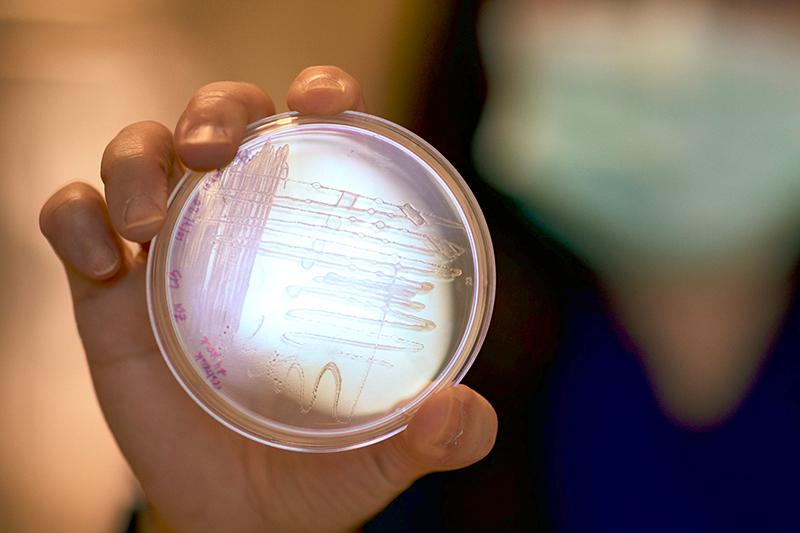Sewage-eating bacteria breeds biopolymer
Biopolymer polyhydroxybutyrate (PHB) is being billed as a useful by-product from the consumption of waste sewage by bacterium Zobellella denitrificans (ZD1).

PHB, an emerging class of bioplastics, is produced by several bacterial species when they experience an imbalance of nutrients in their environment. This polymer acts as the bacteria’s supplemental energy reserves, similar to fat deposits in animals. In particular, an abundance of carbon sources and a depletion of either nitrogen, phosphorous or oxygen, cause bacteria to erratically consume their carbon sources and produce PHB as a stress response.
One such medium that can force bacteria to make PHB is crude glycerol, a by-product of biodiesel manufacturing. Crude glycerol is rich in carbon and has no nitrogen, making it a suitable raw material. However, it contains impurities such as fatty acids, salts and methanol, which can prohibit bacterial growth.
Like crude glycerol, sludge from wastewater also has many of the same fatty acids and salts. Professor Kung-Hui (Bella) Chu at Texas A&M University, USA, says that the effects of these fatty acids on bacterial growth and, consequently, PHB production had previously not been examined.
In their study, Chu and her team chose the ZD1 strain, whose natural habitat is the salt waters of mangroves. They tested the growth and the ability of this bacteria to produce PHB in pure glycerol and found that ZD1 was able to thrive and produced the maximum amount of PHB in proportion to its dry weight.
The ability of ZD1 to grow well in a high saline medium is said to give the strain a growth advantage over other non-salt tolerant strains in most organic wastes or waste streams, making non-sterile cultivation of ZD1 for PHB production from such waste possible.
Chu notes that the new method of producing bioplastics could offer a way to cut down manufacturing costs. ‘By leveraging ZD1’s tolerance for salty environments, expensive sterilisation processes that are normally needed when working with other strains of bacteria could be avoided, this would make PHB more competitively priced compared to regular plastics on the market.’
She also explains that ‘before sewage sludge (also known as biosolids) can be disposed, the sludge needs to be stabilised, concentrated and then sent to its final disposal destinations (incineration, or land applications, or landfill)’.
The process of disposal, Chu says, is very costly and due to concerns about potential contamination through land application disposal, more stringent regulations have been set by many states and regions in the US.
‘Sewage sludge is simply the biomass of a microorganism, representing an untapped nutrient and energy resource that can be recovered for beneficial uses. By producing bioplastics from the sludge, we can simultaneously overcome the sludge management issues while valorising into biodegradable bioplastics, which is in high demand for medical devices and many other polymer industries.’
She adds that the research team would now like to explore more organic wastes for PHB production by the ZD1 strain.
‘Many agricultural, industrial and urban organic wastes/wastewater have the potential to support the growth of ZD1 for PHB production. We have recently demonstrated production of PHB using aquaculture waste and wastewater.
‘Additionally, we are welcoming potential collaborations from different sectors (public or private) to further the work into pilot studies, particularly demonstrating the application of strain ZD1 for producing PHB from organic wastes/wastewater in a pilot scale.’







